
A mannequin peering out of a ‘Lunatic Box’ on display at the Glore Psychiatric Museum in Saint Joseph, Missouri.
In 1874 the state of Missouri opened the “State Hospital for the Insane #2” more commonly referred to as the “Lunatic Asylum #2.” The asylum prided itself as the kind of institution that took on the “noble work” of “reviving hope in the human heart and dispelling the portentous clouds that penetrate the intellects of minds diseased.” While this claim does sound noble, the methods that were used to “penetrate” the minds of the patients who found themselves in one of the institution’s 25 beds were often medieval at best. At their worst the treatments administered by the staff were variations of what would be considered torture and were often experimental in nature—usually causing more harm than good.
The asylum would fill all of its available beds. In 1899 the institution changed its name to the far more friendly sounding St. Joseph State Hospital. Five decades later over 3,000 patients had passed through the hospital including dangerous criminals who had long taken leave of their mental faculties. These criminally insane people walked the halls alongside of residents who were struggling with depression. The hospital would continue to operate for 127 years. In 1967 a long-time employee of the Missouri Department of Mental Health, George Glore opened a museum in one of St. Joseph’s many wards. Glore’s on-site museum housed various mental health related artifacts that had been used over the centuries to treat patients with mental health problems, such as the horrific sounding “Lunatic Box” which was routinely used to treat patients that could not be easily controlled and were prone to act out, perhaps violently. The box, which strongly resembled a fucking coffin of all things, would house the patient in complete darkness in a standing position for hours. Patients were not even allowed to leave the box to go to the bathroom, leaving them to do their business in the box until a member of the staff felt that they had reached the appropriate level of zen.
In 1997 what is now known as the Glore Psychiatric Museum moved to a large, three-story building in order to provide enough room for its vast array of oddities. Below you’ll find many images from exhibits on display at the Glore including some haunting artwork done by patients who resided at St. Joseph’s during its century-plus existence. If you’re planning on visiting Saint Joseph, Missouri anytime soon the museum is open Monday to Sunday and kids get in FREE. Yikes.
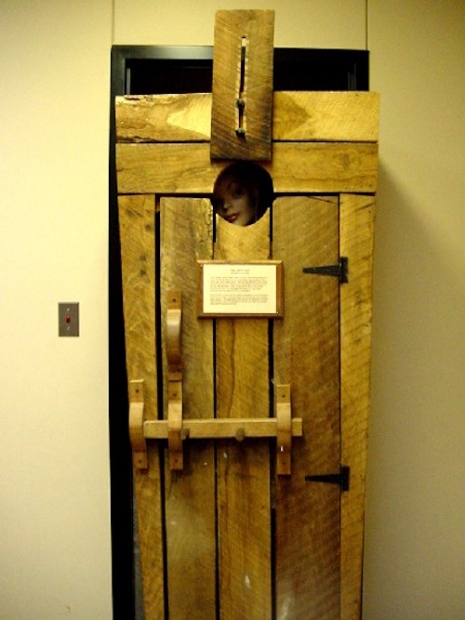
A long shot of the ‘Lunatic Box’ which was used during the 18th and 19th century.
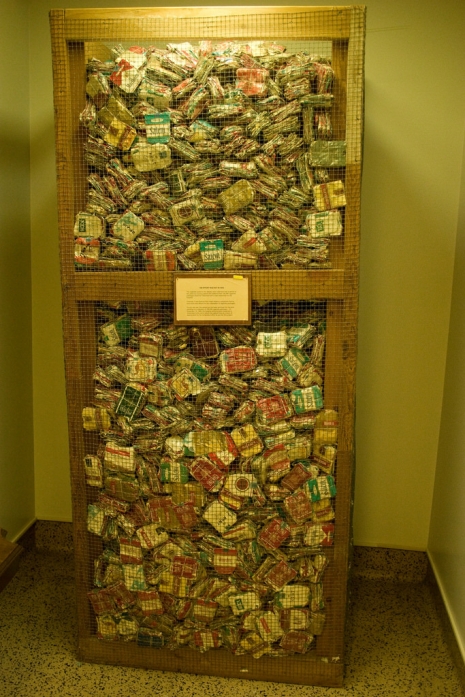
A display containing 110,000 cigarette boxes that were collected by a resident of the St. Joseph State Hospital.

A closer look at the box holding the cigarette box collection.
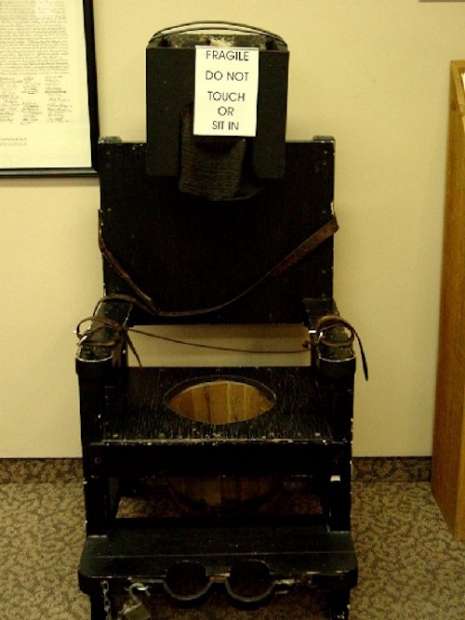
A vintage ‘Tranquilizer Chair.’ When in use, patients could spend up to six months strapped into the chair.

A ‘Restraint Cage.’
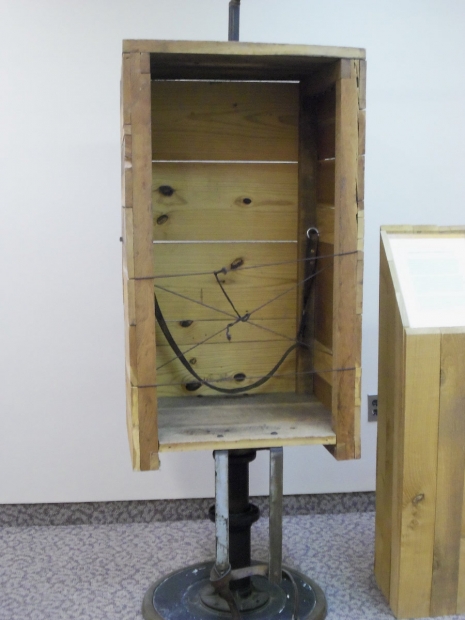
The ‘O’Halloran’s Swing.’ This contraption when in use would rotate at approximately 100 revolutions per minutes (RPM). The intention was to help improve the patient’s circulation of blood to their brain. Instead it sent blood hurtling to the brain making the subject violently ill.
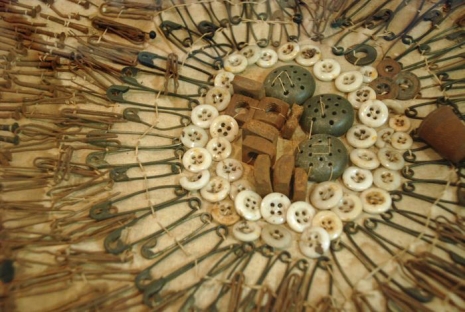
An images of the 1,400 objects including buttons and safety pins swallowed by a patient at St. Joseph’s in 1929.
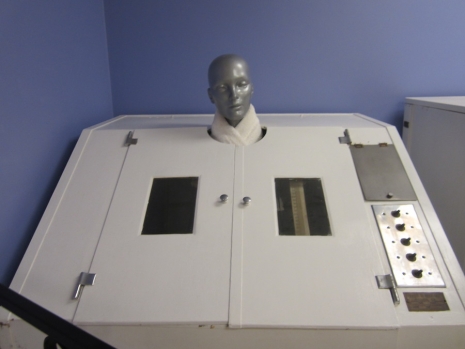
A mannequin enclosed inside a ‘Fever Cabinet’ that was used to sweat syphilis out of a patient’s body.

Two more mannequins at the Glore wear various physical restraints. The mannequin on the left is wearing gloves that have been strapped to her wrists so she is not able to injure herself or others.
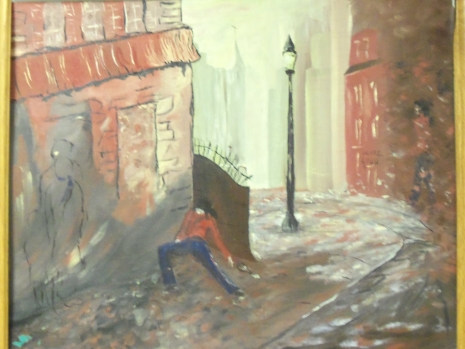
An evocative painting done by one of the residents of St. Joseph’s.

Another painting done by a patient at St. Joseph’s in 1962.

Barbie dolls in a display case at the Glore wearing straight jackets.
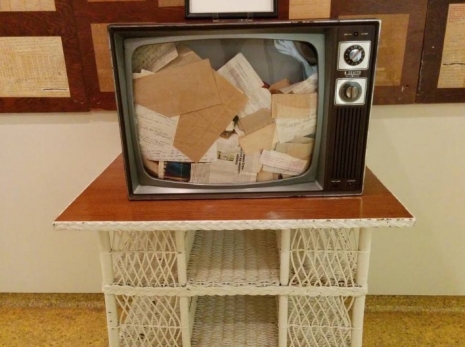
Some of the 525 notes that a patient at St. Joseph’s stashed away in the back of a television. Apparently the resident was under the impression that hospital staff were keeping two boxcars full of money from him and included the serial numbers to the boxes on the notes.
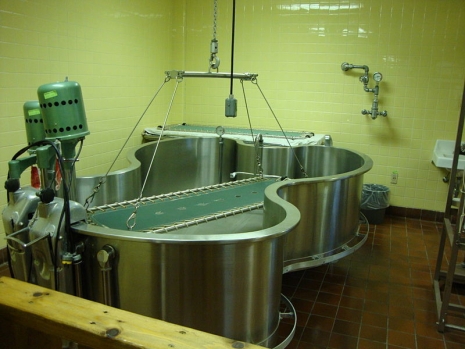
‘The Bath of Surprise.’ Though it wasn’t used much as the risk of death was high, patients were plunged into the water with no warning which often led to shock.
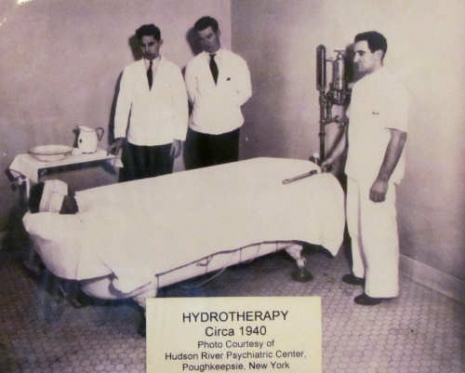
A ‘Hydrotherapy Tub,’ 1940.

A rather chilling piece of embroidery done by a patient at St. Joseph’s.
HT: Legends of America
Previously on Dangerous Minds:
Artist sketches haunting illustrations of mental illness & emotional disorders every day of October
Artist illustrates what it’s like to live with anxiety and depression
These photographs absolutely nail depression